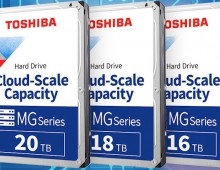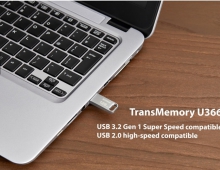Toshiba OCZ RD400 512GB M.2 PCIe SSD
9. Summary
With the OCZ RD400 512GB SSD, Toshiba has created a very fast SSD for enthusiasts, capable of providing average read speeds of more than 2.1GBps and average write speeds of 1.2GBps. These figures are even higher, depending on the benchmark you may use in order to test the device.
Compared to its basic rival, the Samsung 950 Pro 512GB, the RD400 is overall a bit slower. It read at about the same speeds in sequential tests and fell a bit behind in sequential writes. But at those speeds, the difference is subjectively unnoticeable.
In the 4K threaded tests, the RD400’s results were very high. OCZ’s new drive was significantly faster than the 950 Pro’s writing, but fell well short of its rival’s read speed.
The same good performance for Toshiba's drive continued in 4K write (QD4 and QD16) tests, although Samsung's drive took the lead in the corresponding read tests.
Obviously, if your need is to write small files, then the RD400 might be the better choice. For applications that read from multiple files simultaneously, then the 950 Pro will be what you want.
On the other hand, the RD 400 gave lower scores in the PCMark 7 and PCMark 8 Storage benchmarks.
Congratulations, Toshiba. With the OCZ RD400, you have delivered a solution that easily earns its place as a high-end SSD, with no major weaknesses and a solid competitor to the Samsung 950 Pro.
The 512GB version of the RD400 costs $330 (PCIe adapter included). That's almost the same you'll have to spend for the Samsung 950 Pro 521GB SSD. Don't forget that the Samsung 950 Pro is based on 3D flash, while Toshiba has chosen to respond with a fast, well-optimized SSD based on MLC NAND.
Toshiba could make up the difference with the 950 Pro through a more aggressive pricing policy, but it did not accomplish that with the RD400.






















